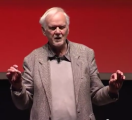 Anthony Blake has written a book on The Supreme Art of Dialogue: Structures of Meaning where he explores meaning-making and how to unlock the possibilities of dialogue from a multi-disciplinary perspective. Here is a talk by him on the the same subject at the Art for Business Forum in Milan November 2012. And here is an interview with him in conjunction with the Forum where he lists the following critical aspects of dialogue:
Anthony Blake has written a book on The Supreme Art of Dialogue: Structures of Meaning where he explores meaning-making and how to unlock the possibilities of dialogue from a multi-disciplinary perspective. Here is a talk by him on the the same subject at the Art for Business Forum in Milan November 2012. And here is an interview with him in conjunction with the Forum where he lists the following critical aspects of dialogue:
- People are invited into the dialogue and take part voluntarily. They must decide for themselves whether it is worthwhile.
- People sit in a circle – which is both symbolic, because it makes everyone equal in status, and efficient, because it enables everyone to be seen and heard.
- The session has a defined beginning and end which is kept to rigorously and no one leaves or enters during this time.
- Any other activity than speaking is discouraged.
- Common courtesy of not interrupting, etc. is presumed.
- People speak clearly to be heard and not at excessive length.
- Very often people want to impose the things they are used to, such as having a leader, setting an agenda or following a defined methodology. These must be resisted.
- The number of participants is critical. The larger the number of people the better, because this makes diversity more probable, but they must also be heard and have time to speak. 15-20 people seem to be optimum.
- Dialogue depends on equality, autonomy and freedom of speech. Therefore a dialogue group within an organisation has to be carefully composed.
Leave a Reply
You must be logged in to post a comment.